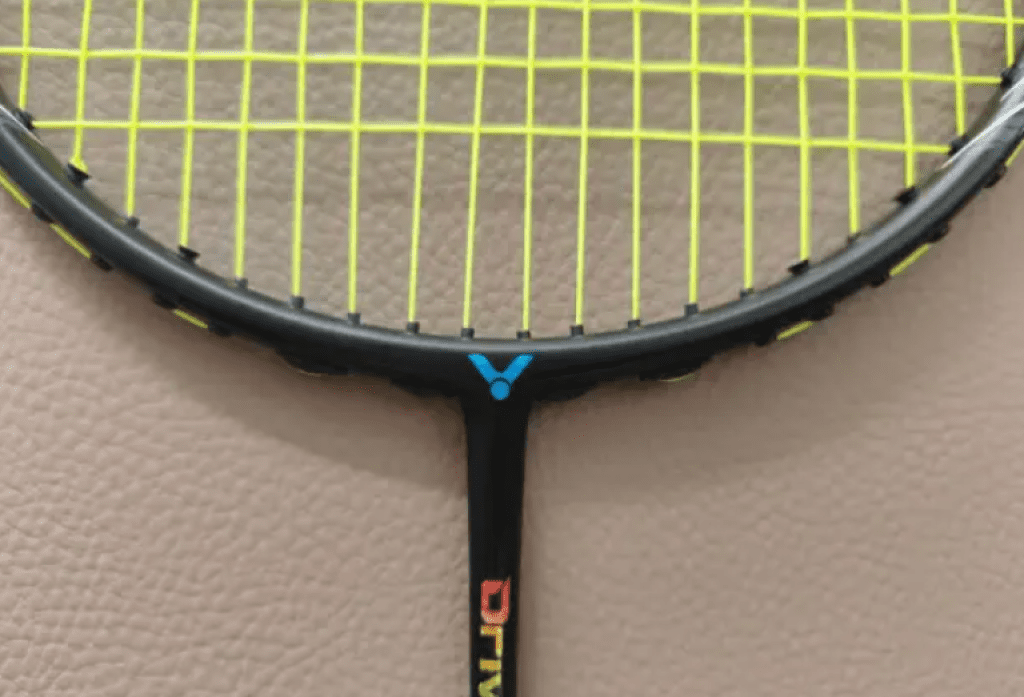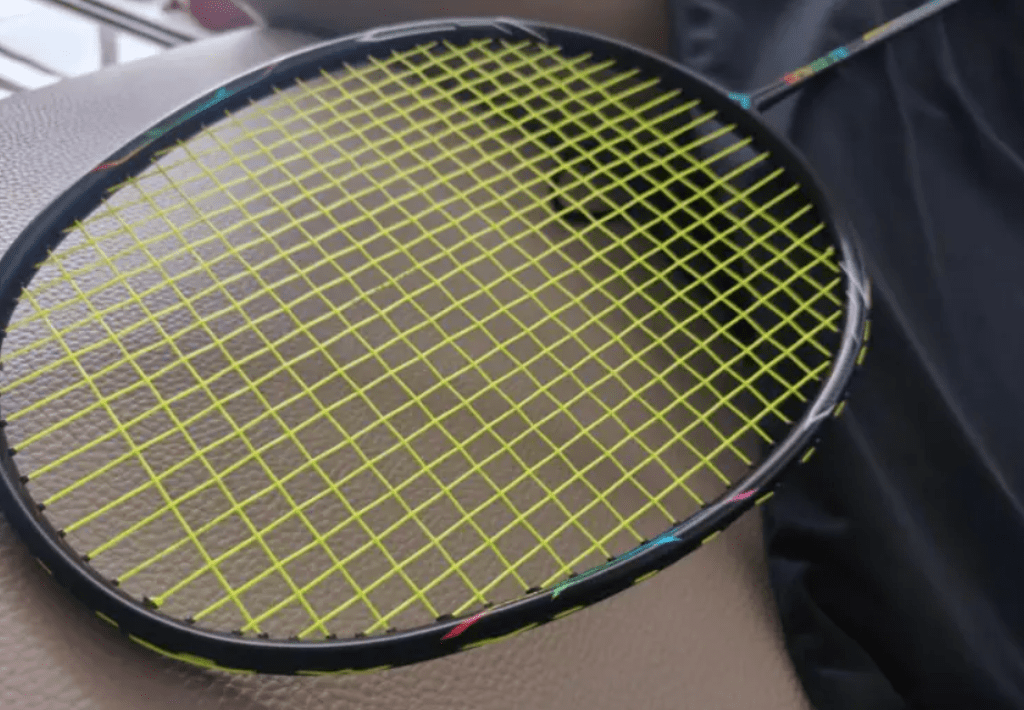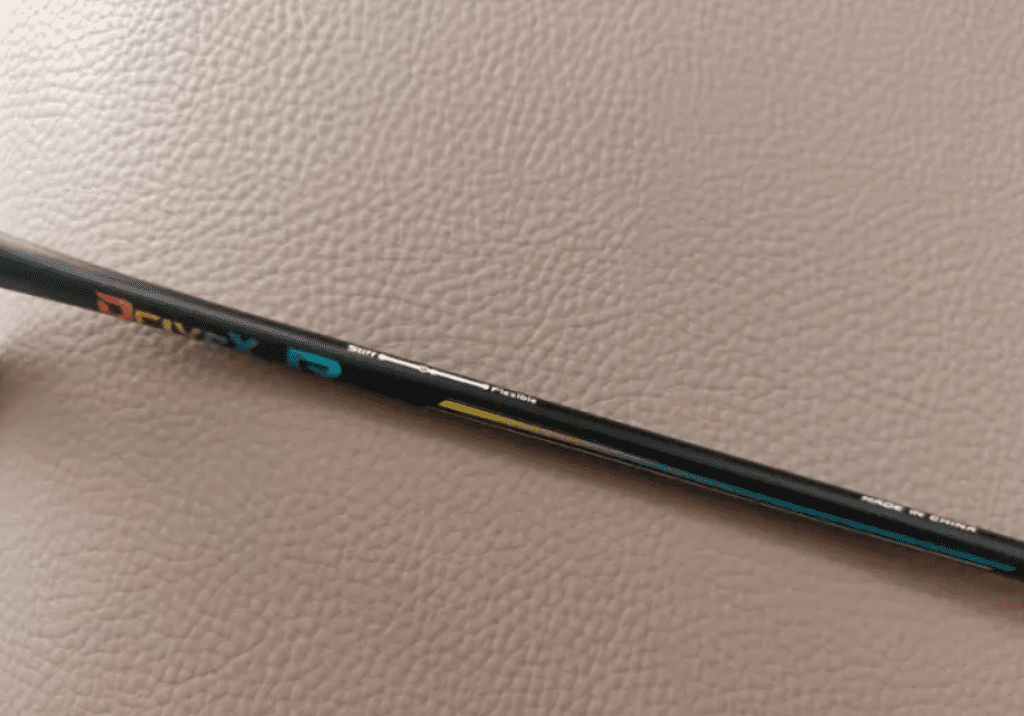While the iron is hot, continue to more a racquet named R, but also at the same time is the current new discount is strong. The announcement of this racquet and its subsequent market performance gave me a lot of mixed feelings, firstly, because during this period of time the author is exactly TK-R and Harness R on the same day wearing the same kind of cable each other switching to create a rigorous enough comparison, and secondly, the blue factory suddenly appeared out of the blue to meet the specifications of the series naming of the supernumerary works and then met with the cold this kind of operation is not strange.
However, taking into account the recent hunt to the quality and reading volume are steadily declining, I will give a direct conclusion: if the business can still give to the beginning of the 400 brand new that is a good price, see the good might as well take.

Parameters: 5UG6, with bottom, total weight of 89.61g in use condition, balance point 287mm, 6.6mm center bar, 210mm long, moderate stiffness, power hexagonal frame, 76-hole thread bed, 9-3 point thread groove, 27lbs warranty, threading 26-28lbs BS710.
I’ve already mentioned the Harness R a bit in the previous article, so I won’t repeat myself. The poorly colored decals on the frame are more like “just for fun”. However, the black primer in the visual convergence effect is very strong, set off the whole racket is very slim view, especially the 6.6mm center pole, there is a kind of weak feeling, but it is really very competent, no nonsense, but also highlights the effect of rainbow-colored R label.
There’s not much to describe the looks, but the configuration and positioning is kinda interesting. Pricing-wise, the 1080 just steps on the threshold of the high-end racket, material-wise it has less TR toughening of the frame than the superior Harness 7K, and once again achieves a precise blade. At the same time, like the TK-R, the racket is only available in 4U/5U sizes, so it seems that the R has become a “quasi-high-end” product positioning.

It was also one of the early models to use a floating handle, so it was still very experimental, but it wasn’t a version with a clear tapered back, which was one of the early results of the decentralization of the Harness 9X technology. Whether this will be as much of a source of quality issues as the stocks, that is indeed a question mark.
However, the racquet has no problem with the hands-on feel, is not too difficult to use, is not too difficult to adapt to, and is one of the more pleasant high-end products. I’ve always been quite fond of the high-end frames in the Harness series, which reach high levels of forgiveness, swing speed and stability, even if the series is relatively cold. Because of the sweet spot hitting swing feel light and fast, it is easier to find the rhythm of hitting the ball in the overhand ball and flat draw block, and it is easier to be able to hit the shape of the middle of the club when the power is released, and the elasticity of the racket is superior, no flaws. Feedback is actually a bit on the direct side, but the suspension grip allows for good cushioning and the feedback isn’t mushy or meaty.

Putting some intensity on the Harness R and taking it to off-court matchups, I found it to be almost a lighter and softer version of the Harness 7K, even drier than even the Harness 8S in terms of shot response. The castrated TR carbon certainly has an impact on the elasticity and toughness of the face, but other than that the mid-range explosiveness, sweet spot location, and holding strength are all comparable to the 7K. When I tried the 7K, I judged it to be a strong attack racquet, so the 5U R is a strong speed racquet.
The performance of the racket in the forecourt is as smooth as silk, and it is easy to close the net, with a strong agility attribute, just like a finger. With an extra 210mm of length in the center, the Harness R’s first half-court draw is also confidence-inspiring, with the feeling of being in control of the ball and the wind in your face. It also brings the racquet’s performance in passive situations up a notch, so you don’t have to worry about catching a wide-angle shot with too much swingweight, or returning a high-quality shot with too little elasticity.

Similarly, as a member of the Harness series, its performance in offense can be compared to that of the HX AIR, which I used to use in the past. Although the heavy kill of the 5U racquet lacks a lot of weight for amateur players, under the premise of hitting accurately and focusing on the power, the elasticity of the mid-range alone can make the downward pressure and the flat draw of the ball fast enough through the ejection effect, and at the same time, the mid-range has a toughness, which can produce sharp and clear shots after hitting the ball. The center stick has a toughness that produces a sharp whipping sound after hitting the ball. After meeting these two points, I am willing to give up precise ball control and hitting, after all, it is expected that the bottleneck in the feeling of downward pressure, stability and effort to improve the quality of each shot, it is better to give full play to the characteristics of the coherent and fast bullet to organize the opponents overwhelmed by the intensive attack. The short 6.6mm center stick is a reliable contributor to the offensive performance of this racket.

So the question comes to two, why is it neither selling well nor getting good reviews? I was immediately reminded of the Harness 7K at the time, the lowest price the two had ever dropped was on the same level, and both were blacked out models, with the 7K still being a proper high end racket with a higher configuration. The actual experience of the two rackets is more affected by the weight deployment, the cost-effective are outstanding, you can only choose the best. However, when the 7K has been shipped almost finished, the Harness R will then become a “victim”.


Leave a Reply